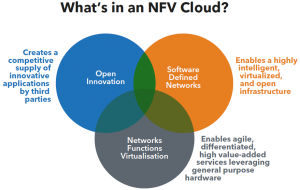I have been working on IoT for over a decade. While I have always thought that IoT is here to stay and set to impact our lives dramatically, the IoT community is still grappling with the key question of how to connect the dots between different IoT standards and open-source technologies.
The Alliance for the Internet of Things Innovation (AIOTI) is an association driven by policymakers, academia and industry with the aim of advancing IoT deployments across Europe and beyond. AIOTI generated huge debate when it first published a report surveying the IoT standards landscape. This report made it evident that navigating a myriad of IoT standards could be a major roadblock for both small and large companies attempting to make their way into the IoT market. These companies are faced with a legitimate question: what standards should we use and are standards our best bet for future growth and time-to-market for our IoT products?
A recent market-research study by McKinsey made a strong case for the interoperability of IoT systems, stating that, “of the total potential economic value the IoT enables, interoperability is required for 40 percent on average and for nearly 60 percent in some settings.” McKinsey’s findings are highly significant. They highlight a clear need for industry players and standards developers to adopt a call to action for IoT convergence and interoperability. This will be essential in achieving the full potential of IoT and in deploying IoT for use cases where costs have so far proven prohibitive.
I am the Technical Plenary chair of oneM2M, the global standards initiative that covers requirements, architecture, API specifications, security solutions and interoperability for Machine-to-Machine and IoT technologies. As a partnership project that produces specifications for interoperability within and across IoT, convergence and interoperability are part the DNA of oneM2M.
From this angle, I have been following the work of ITU-T Study Group 20 (SG20) – ITU’s standardization expert group looking at IoT and its applications to smart cities – since the group’s establishment in June 2015. SG20 did not start from scratch, it grouped already existing ITU standardization activities under a single umbrella. SG20’s participants can be proud of their achievements to date.
The approach taken by SG20 is unique. It tackles the problem globally, considering not only IoT but also issues such as IoT’s relationship to Big Data, and Identity Management in federated IoT environments.
SG20’s work on Key Performance Indicators for smart cities has also proven valuable in providing cities with a tool to think strategically about their overarching priorities.
ITU has succeeded in building a framework that goes well beyond IoT but where IoT is an important piece of the innovation strategies being devised by industry and government. This is also an important contribution to convergence, providing a framework for the coherent application of different technologies.
The complementary nature of the work undertaken by ITU-T SG20 and oneM2M has motivated their common members to work together to provide added value to the IoT marketplace. These common members are submitting oneM2M specifications to ITU-T SG20 with the goal of having these specifications approved as ITU standards. oneM2M’s functional architecture specification is the first to enter the ITU standards approval process, motivated by the understanding that the oneM2M architecture provides a good complement to the requirements put forward by ITU-T SG20.
The agreement between ITU and oneM2M opens the door to more inclusive collaboration. Members of both ITU and oneM2M will support the evolution of resulting standards, a substantial step forward in efforts to improve the coordination of IoT standardization.
oneM2M members have been encouraged by the progress achieved so far and are committed to continued collaboration with ITU. The recently announced liaison agreement between oneM2M and the Industrial Internet Consortium – joining forces to work on Industrial IoT use cases and requirements – is another example of oneM2M’s commitment to convergence and collaboration.
Industry-wide collaboration in standardization is already ensuring that the market does not fragment and wide-scale deployments are not plagued by interoperability issues and vendor lock-in. There is more to be done and we share this view and vision with ITU.
Source of Article


